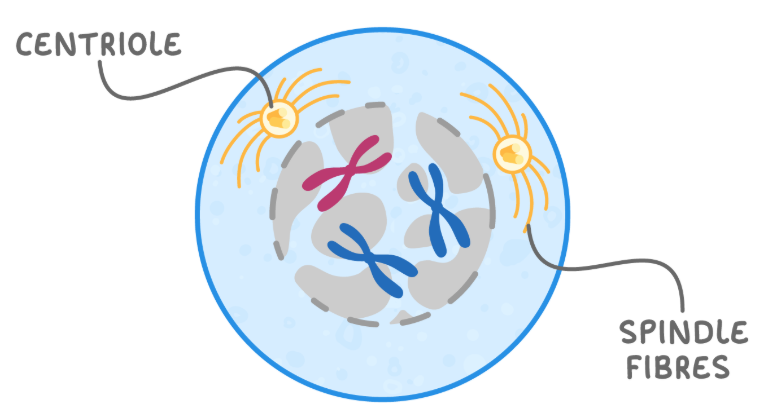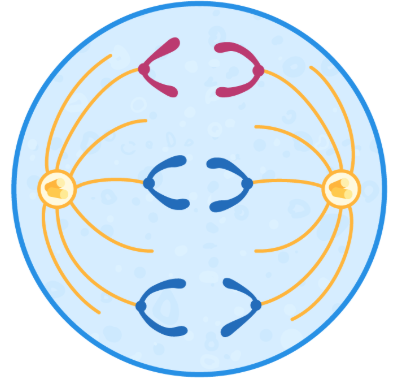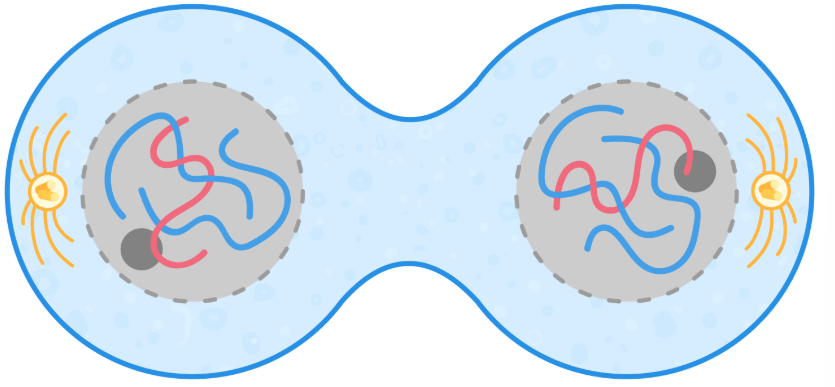The Cell Cycle
1/7
Earn XP
Description and Tags
Name | Mastery | Learn | Test | Matching | Spaced |
|---|
No study sessions yet.
8 Terms
Name and describe the 1st stage of the cell cycle
During interphase, the cell caries out its normal function, it has 3 sections: G1, S and G2.
G1 involves cell growth. S involves DNA replication. G2 involves preparation for mitosis - e.g. development of spindle fibres.
Name and describe the 2nd stage of the cell cycle? (briefly)
Mitosis is the division of the nucleus in eukaryotic cells dividing to produce two genetically identical nuclei. Mitosis includes Prophase, Metaphase, Anaphase and Telophase.

Why is mitosis important?
Growth: all cells produced in mitosis are identical so can be used for growth.
Repair: daughter cells produced can replace dying tissue.
Reproduction: some single-celled organisms asexually reproduce using mitosis.
Production of stem cells: stem cells divide by mitosis.
Prophase
Chromosomes condense. Centrioles migrate to opposite poles of the cell and begin forming spindle fibres. The nuclear envelope starts to break down, and the nucleolus disappears, leaving the chromosomes free in the cytoplasm.

Metaphase
The chromosomes line up along the equator of the cell, and spindle fibres (called microtubules) attach to the centromere of each chromosome.

Anaphase
The centromeres divide and the chromatids are separated and pulled to opposite poles of the cell by spindle fibres.

Telophase
When chromatids reach poles of cell, they uncoil and become long thin chromosomes again. A nuclear envelope forms around each set of chromosomes to form two nuclei, and nucleolus reforms.

What is the 3rd stage of the cell cycle?
Cytokinesis- after mitosis, the cytoplasm and cell membrane divides, producing two genetically identical daughter cells.
